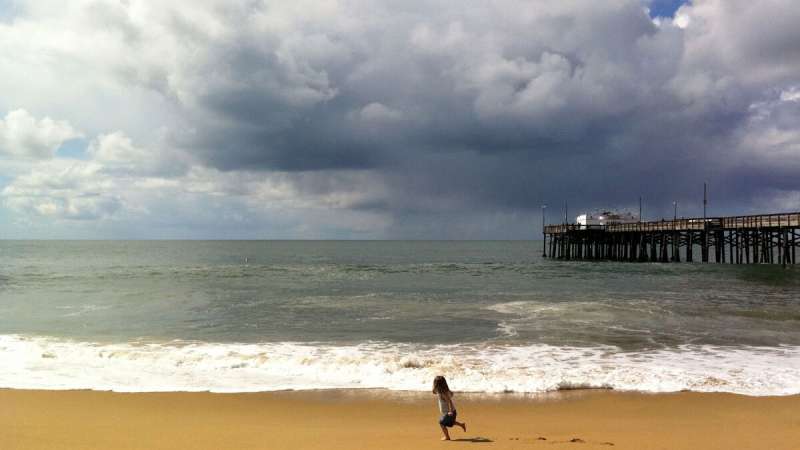Measuring sea level rise along the coast

Earth's ocean is clearly rising. Between the loss of land and sea ice and warmer waters expanding, rising sea level is a global issue. But the equation governing exactly where the land meets the ocean also depends on the land itself. For instance, various forces such as the motion of tectonic plates can cause vertical land motion (VLM) that either exacerbates or mitigates the threat of sea level rise.
VLM is caused by a host of different factors. Tectonic forces can drive continents up or down as plates subduct beneath one another. But motion can also result from changes in the water content in an aquifer or stored in the land's surface water.
In a new study supported by NASA's Sea Level Change program, Hammond et al. use GPS station data from thousands of sites across the planet to create a global map of VLM along the coasts, which the authors say, can be compared to tide gauge data to forecast future sea level rise.
One particularly important cause of VLM is glacial isostatic adjustment (GIA), which describes how Earth's crust rebounds after ice melts away. Similar to how a memory foam mattress doesn't rebound immediately when you roll over, the crust takes time to rebound when large amounts of ice melt. In fact, Earth's crust is still rising in many places in the Northern Hemisphere as it recovers from the last ice age.
Thanks to GIA, the vertical land motion on Earth's continents is upward on average, meaning the land is, on average, moving away from the core. This also means that ocean basins and ice-covered areas are, on average, subsiding. But according to the authors, if GIA is removed from the equation, the reverse is true: The land subsides, on average, and the ocean basins and ice-covered areas undergo uplift.
The global view of coastal land motion, the researchers say, should help create a reference point for measuring the threat of sea level rise as our planet continues to warm.
More information: William C. Hammond et al, GPS Imaging of Global Vertical Land Motion for Studies of Sea Level Rise, Journal of Geophysical Research: Solid Earth (2021). DOI: 10.1029/2021JB022355
Journal information: Journal of Geophysical Research: Solid Earth
Provided by American Geophysical Union
This story is republished courtesy of Eos, hosted by the American Geophysical Union. Read the original story here.





















